One of the biggest parts of football refereeing is judging the severity of fouls. Many people, specially spectators, like to think they understand when and why a challenge is worthy of a yellow or a red card. However, not many understand truly why some challenges need a certain type of disciplinary challenge or not.
In this article, we’ll talk about some practical guidelines that can be applied to most challenges and help us better judge and motivate a disciplinary sanction.
THE LAW
As always, the first thing we must do is identify where in the LoTG we can find more information about the Severity of Fouls.
The obvious answer (or at least should be) is Law 12. When talking about the Severity of Fouls, we will always be looking at the 7 offences that result in a Direct Free Kick:
The Laws are clear about what offences can be careless, reckless or using excessive force. As you may have noticed handballs, holds and pulls, impeding, biting and spitting have all been excluded from these considerations. But why, you ask? That is very simple: you cannot hold or bite someone in a reckless manner. Holding is holding, there is no degree of force into the hold. Same goes for biting: this is a violent behaviour and must be punished with a red card for violent conduct, doesn’t matter if it was a ‘careless’ bite. Biting an opponent doesn’t belong to football matches (it doesn't belong anywhere in a civil community, really).
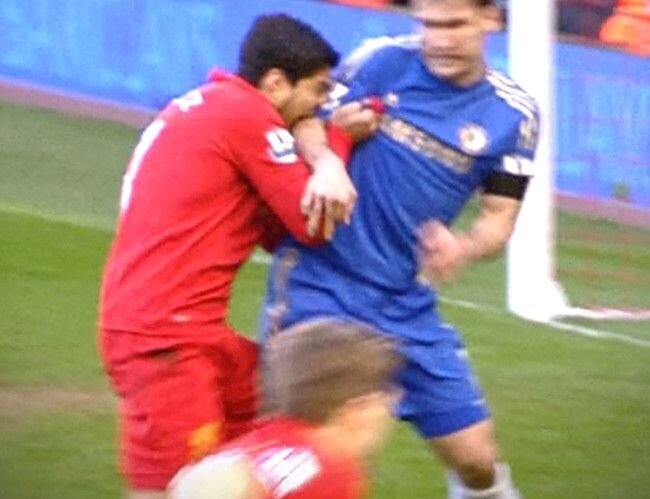
An example of a biting offence
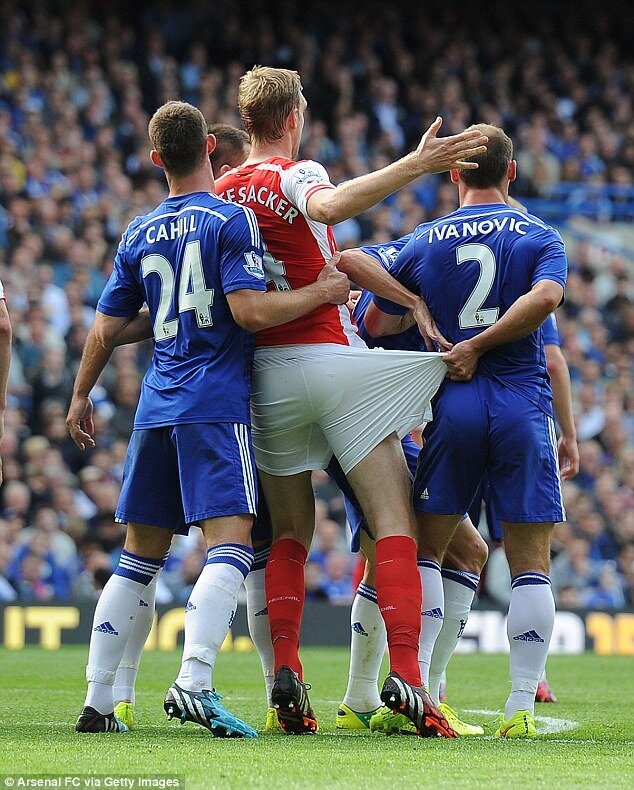
An example of a hold
Before we move further let’s review the three definitions for careless, reckless and using excessive force so that we can use them when doing video analysis:
When judging the severity of a foul, there are always three factors to keep in consideration: speed, force & point of contact. When judging the following videos, we will need to define if speed and force are low, medium or high. The point of contact can either help us in situations where speed and force are not enough to decide, or could even completely change the decision. We will see more soon. Let’s analyse each factor one by one using this video as an example:
SPEED
What is speed?With speed of a challenge we talk about the speed a player reaches their opponent to make that challenge.
Why is it important?It is important because the faster a player is running, the harder it is to control a challenge, this results in additional force and a higher potential to hurt an opponent.
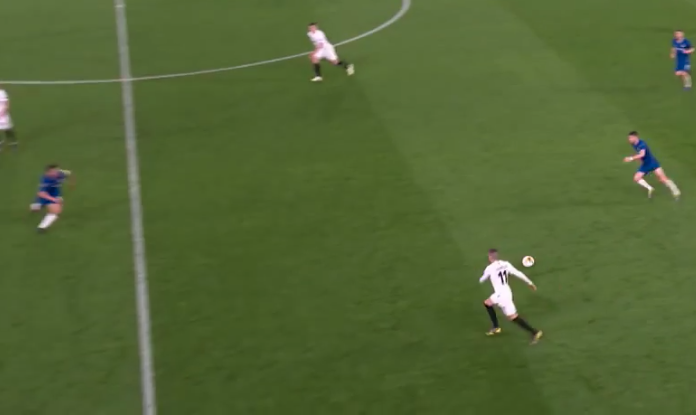
In this example, we can see how the blue captain runs into the challenge from a great distance, around 10m, to then dive into a challenge. We can say with no doubt this challenge is made at high speed.
In this example, we can see how the blue captain runs into the challenge from a great distance, around 10m, to then dive into a challenge. We can say with no doubt this challenge is made at high speed.
Why is it important?
It is important because the more forceful a challenge the higher is the danger to an opponent, clearly changing the severity of a foul.
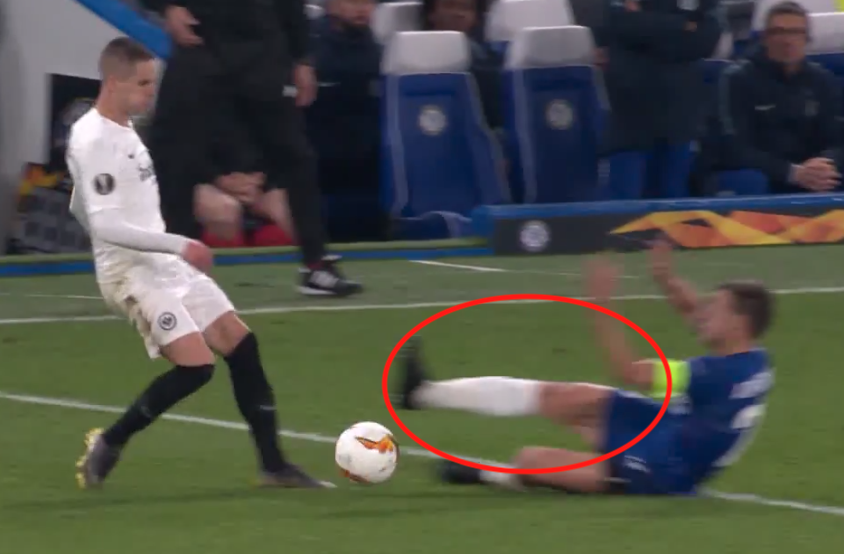
In this example, we can see how the blue player has his knee locked when making a challenge. This means his whole body weight is going to be transferred into his leg, making the force of this tackle high.
POINT OF CONTACT
What is the point of contact?This is pretty self explanatory. The main two questions to ask are what part of the body does the offender hits the opponent with and what part of the body does he/she hit?
Why is it important?The point of contact is very important as it is key to define the entity of a foul. If a player simply trips an opponent and the point of contact is shin on shin, we are most likely looking at a careless tackle. Instead, if the point of contact is studs on groin, we are most likely looking at use of excessive force.
VIDEO ANALYSIS
Now that we’ve talked about how to judge the severity of a foul, let’s watch 5 videos and go through the considerations to define whether a foul is careless, reckless (YC), or excessive force (RC).
NB: for this exercise we will not keep in considerations SPAs & DOGSOs.
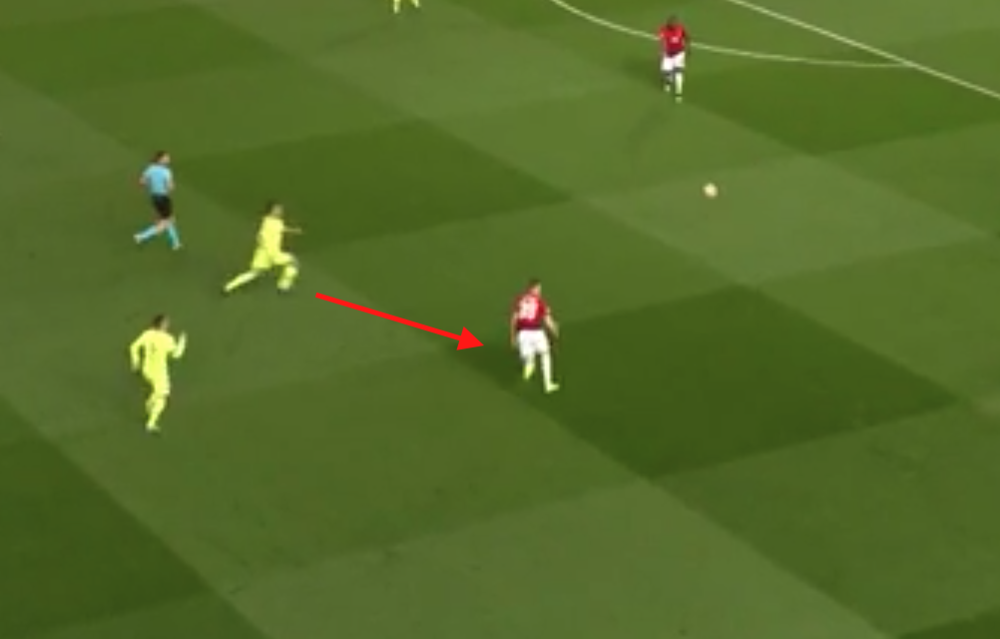
Speed
Medium/High. The yellow player runs in from 5/6m to go in for the challenge.
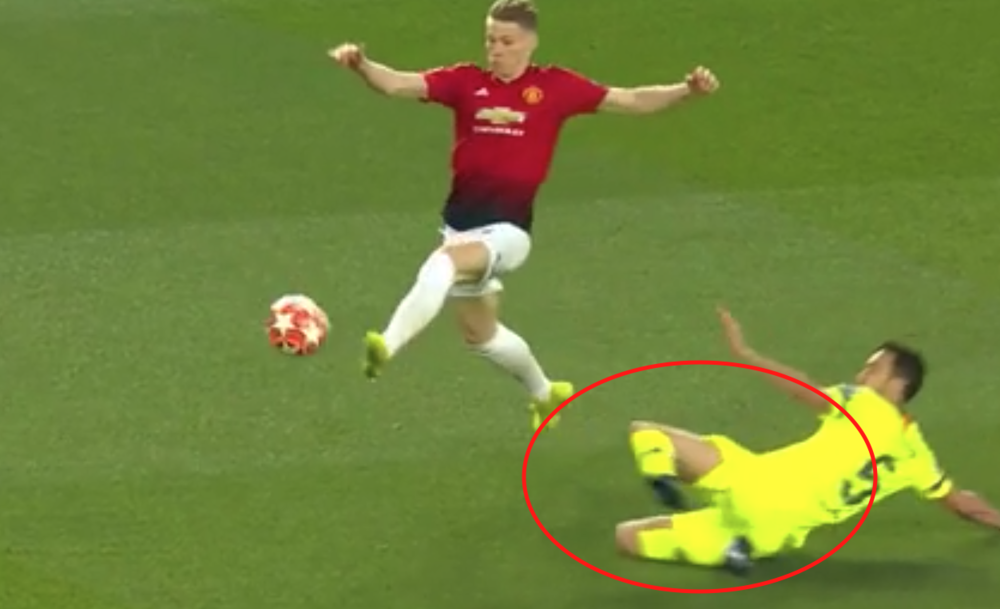
Force
Low. The player has both of his legs bent and is not putting much force in the tackle other than trying to kick the ball away, making the force of this tackle negligible.
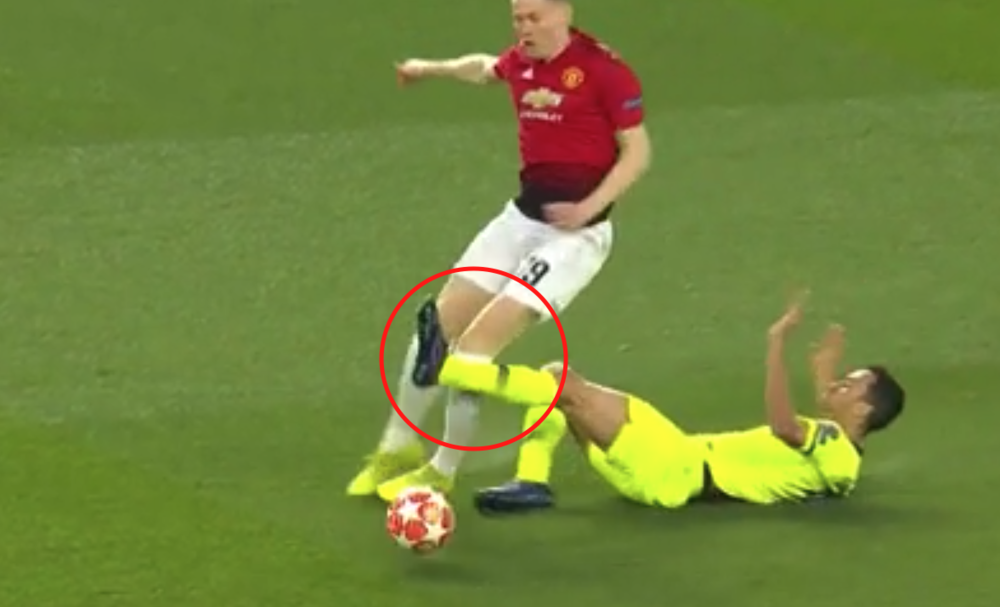
Point of Contact
The point of contact is lower shin vs side of the knee.
RECKLESS TACKLE = FREE KICK, YELLOW CARD
Medium/high speed + low force + non dangerous point of contact result in a reckless tackle. The yellow player acts with disregard to the danger to, or consequences for, an opponent.
VIDEO 2
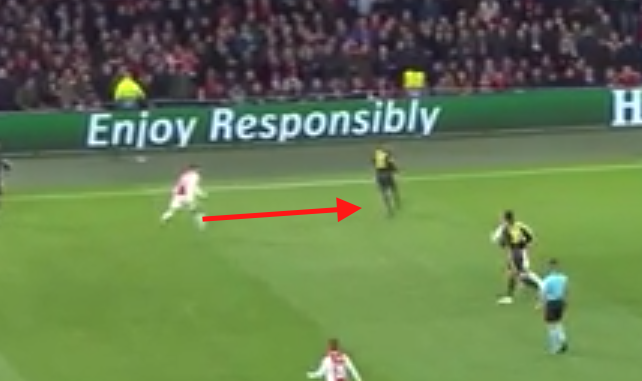
Speed
Low. The white player is close to his opponent, around 3m.
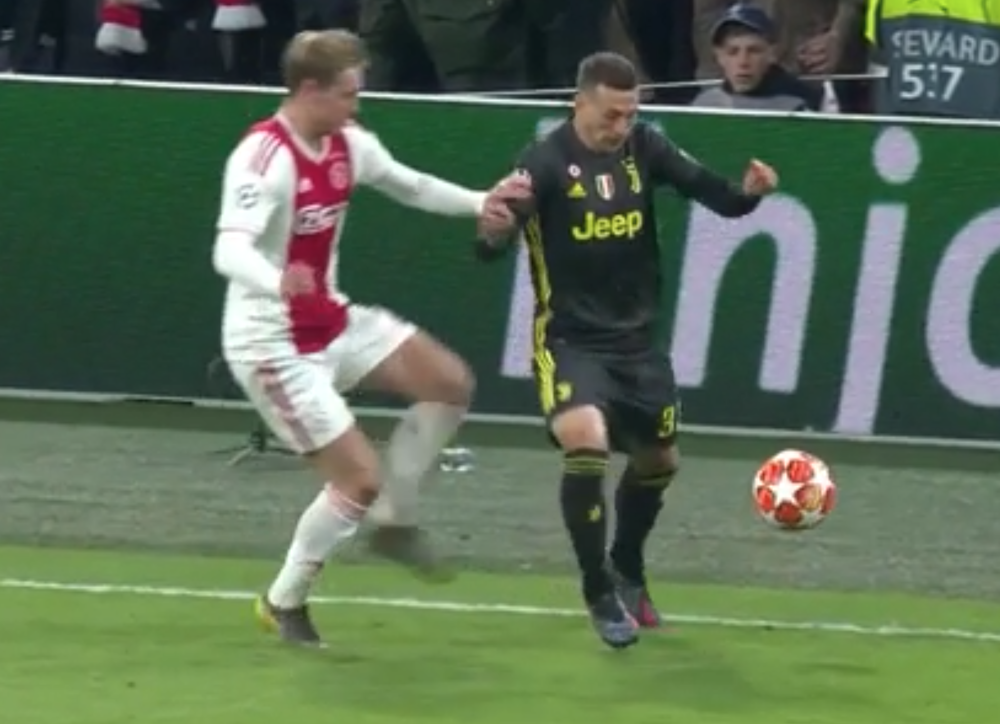
Force
Low. The white player attempts to tackle for the ball with very little force into his challenge.
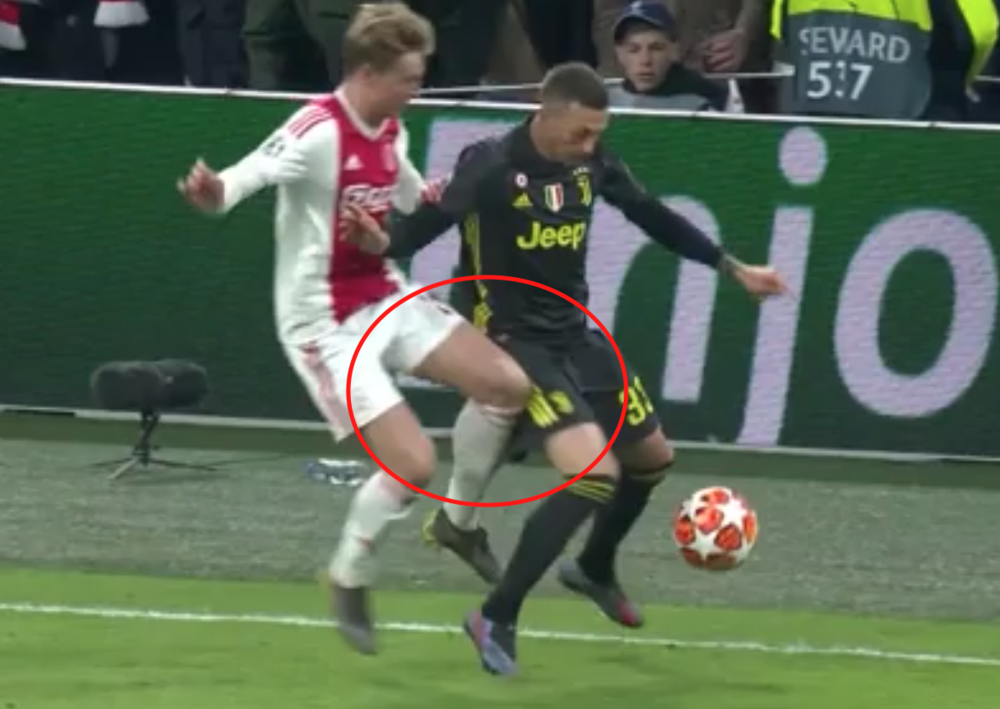
Point of contact
Side of the knee on external side of the leg.
CARELESS TACKLE = FREE KICK, NO CARD
Low speed + low force + non dangerous point of contact result in a careless tackle. The white player shows a lack of attention or consideration when making a challenge or acts without precaution.
VIDEO 3
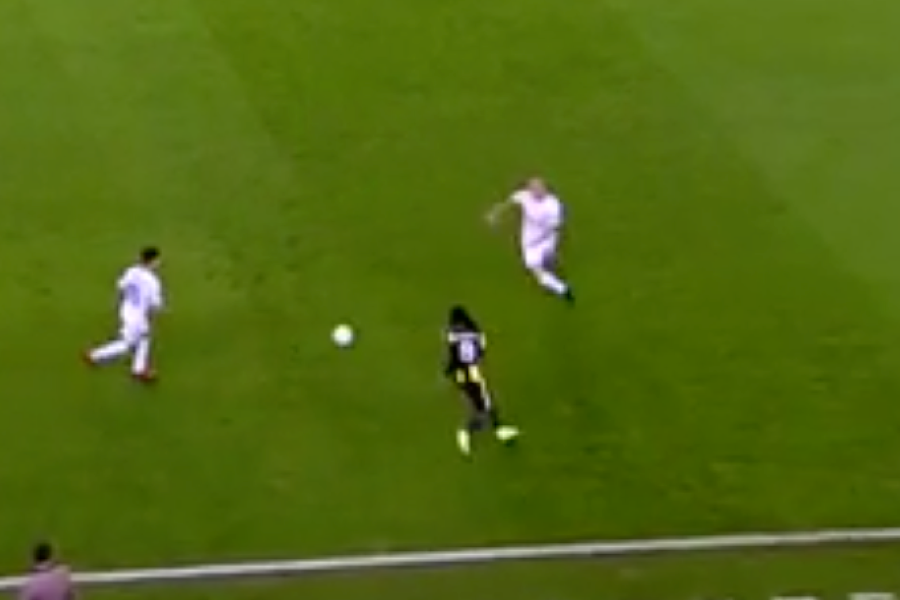
Speed
Low. The white player is really close to the blue and yellow player.
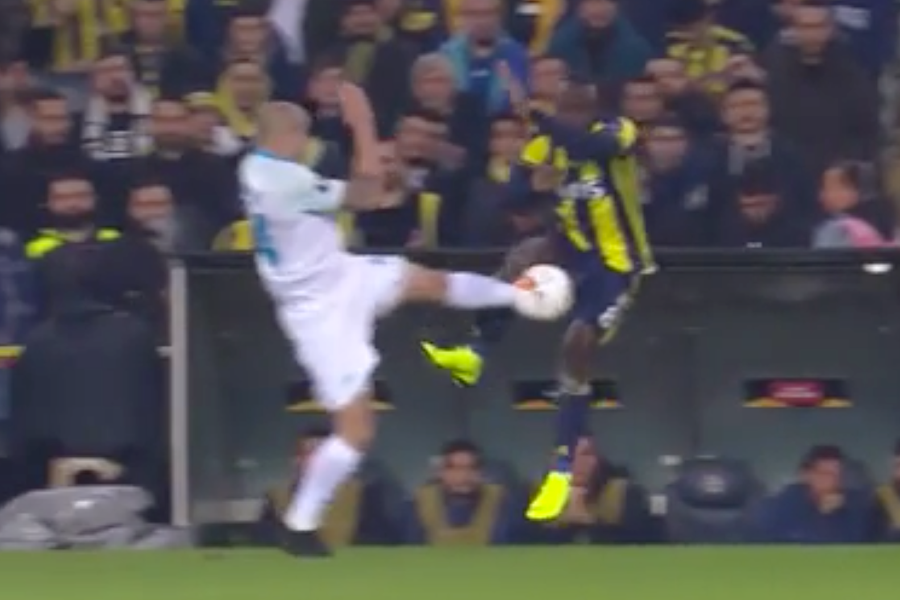
Force
High. As you can see the white player locks his knee in when going for the challenge, transferring his whole body weight into his leg, therefore into the challenge.
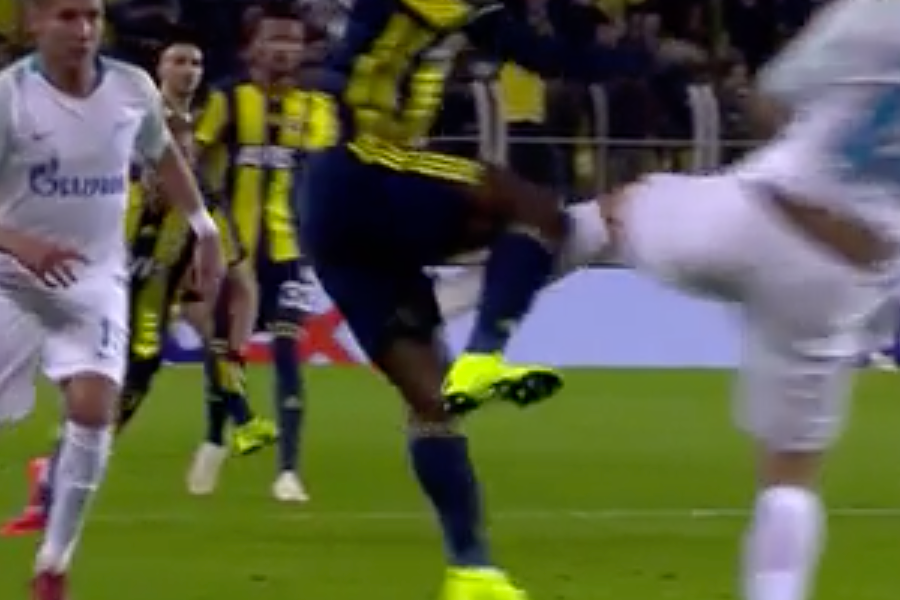
Point of contact
Studs on the inside of the leg / groin.
USING EXCESSIVE FORCE = FREE KICK, RED CARD
Low speed + high force + dangerous point of contact result in a tackle using excessive force. The white player the necessary use of force and/or endangers the safety of an opponent.
VIDEO 4
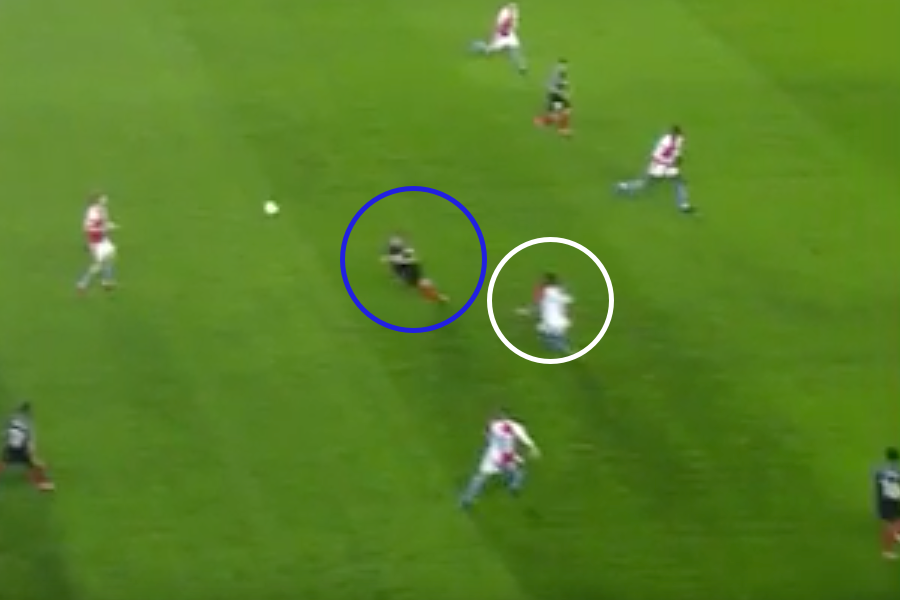
Speed
Medium/Low. The blue player is running and slips, losing control of his body, impacting at a medium/low speed.
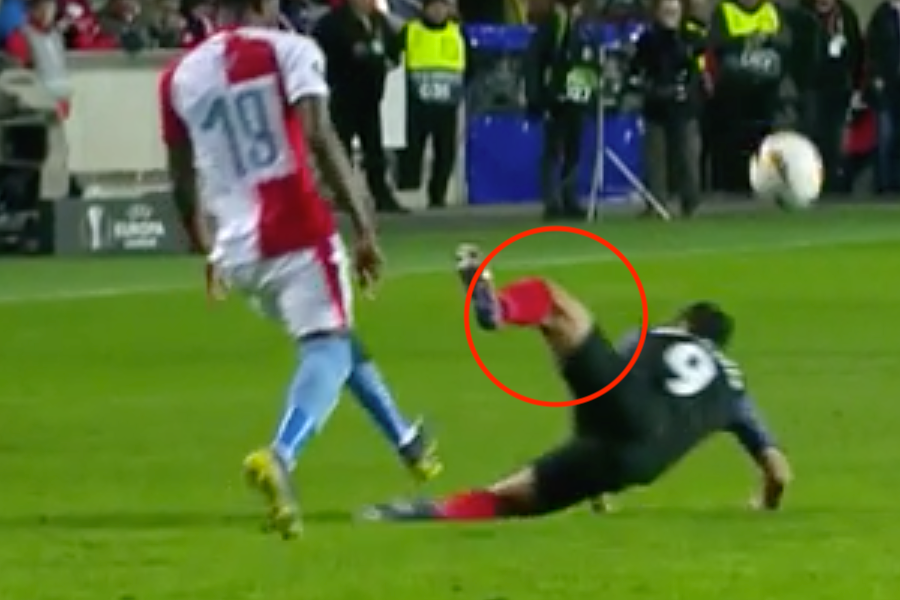
Force
Medium/Low. The blue player slips, loses control of his fall, the force is negligible and he doesn’t have his knee locked in.
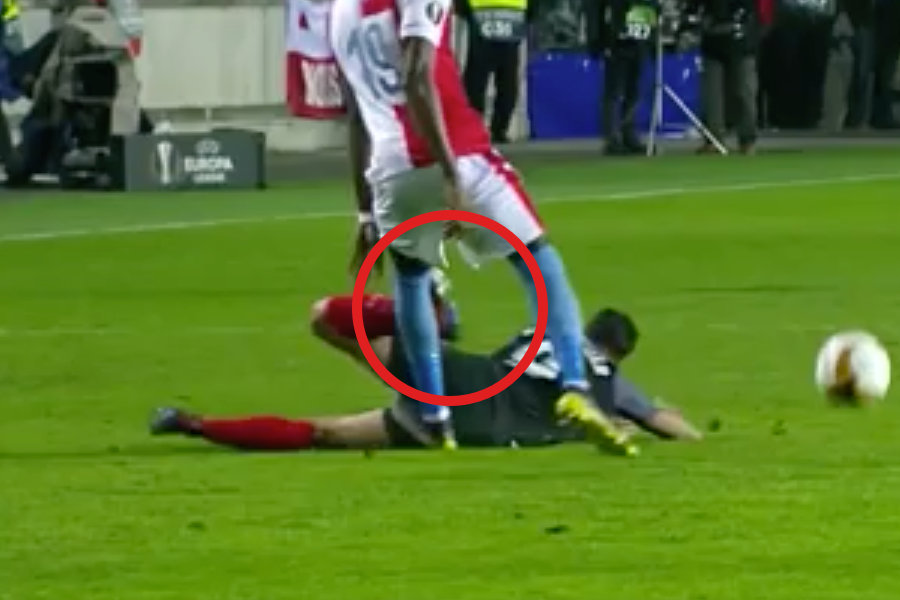
Point of contact
Foot on knee very high.
VIDEO 5
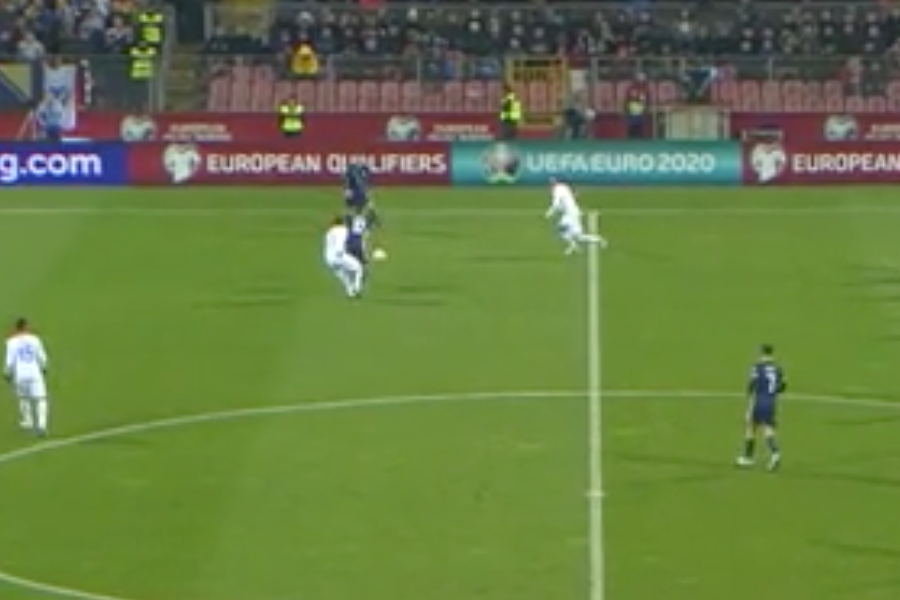
Speed
Low. The blue player is close to the spot where he challenges the white player.
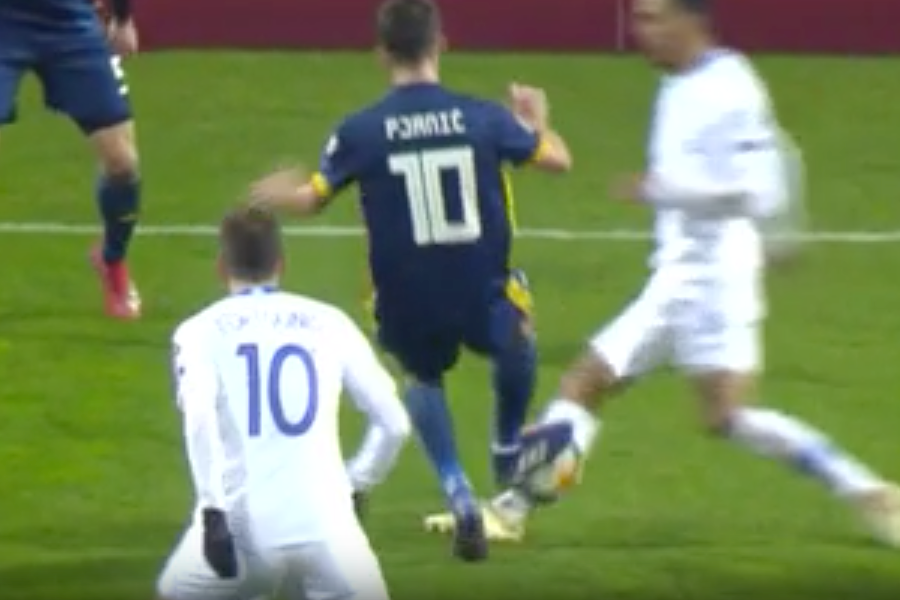
Force & Point of contact.
Medium force. The blue player’s knee is bent, reducing the force of the tackle. The player’s studs face the inside of the lower leg of the white player. The white player is lucky the ball is in between his leg and the opponent’s foot otherwise he would have been in real danger to get injured.
RECKLESS TACKLE = FREE KICK, YELLOW CARD
Low speed + medium force + dangerous point of contact result in a reckless tackle. The blue player acts with disregard to the danger to, or consequences for, an opponent.
Permalink
Continue reading...
In this article, we’ll talk about some practical guidelines that can be applied to most challenges and help us better judge and motivate a disciplinary sanction.
THE LAW
As always, the first thing we must do is identify where in the LoTG we can find more information about the Severity of Fouls.
The obvious answer (or at least should be) is Law 12. When talking about the Severity of Fouls, we will always be looking at the 7 offences that result in a Direct Free Kick:
A direct free kick is awarded if a player commits any of the following offences against an opponent in a manner considered by the referee to be careless, reckless or using excessive force:
• charges
• jumps at
• kicks or attempts to kick
• pushes
• strikes or attempts to strike (including head-butt)
• tackles or challenges
• trips or attempts to trip
The Laws are clear about what offences can be careless, reckless or using excessive force. As you may have noticed handballs, holds and pulls, impeding, biting and spitting have all been excluded from these considerations. But why, you ask? That is very simple: you cannot hold or bite someone in a reckless manner. Holding is holding, there is no degree of force into the hold. Same goes for biting: this is a violent behaviour and must be punished with a red card for violent conduct, doesn’t matter if it was a ‘careless’ bite. Biting an opponent doesn’t belong to football matches (it doesn't belong anywhere in a civil community, really).

An example of a biting offence

An example of a hold
Before we move further let’s review the three definitions for careless, reckless and using excessive force so that we can use them when doing video analysis:
Careless is when a player shows a lack of attention or consideration when making a challenge or acts without precaution. No disciplinary sanction is needed.
Reckless is when a player acts with disregard to the danger to, or consequences for, an opponent and must be cautioned.
Using excessive force is when a player exceeds the necessary use of force and/or endangers the safety of an opponent and must be sent off.
When judging the severity of a foul, there are always three factors to keep in consideration: speed, force & point of contact. When judging the following videos, we will need to define if speed and force are low, medium or high. The point of contact can either help us in situations where speed and force are not enough to decide, or could even completely change the decision. We will see more soon. Let’s analyse each factor one by one using this video as an example:
SPEED
What is speed?With speed of a challenge we talk about the speed a player reaches their opponent to make that challenge.
Why is it important?It is important because the faster a player is running, the harder it is to control a challenge, this results in additional force and a higher potential to hurt an opponent.

In this example, we can see how the blue captain runs into the challenge from a great distance, around 10m, to then dive into a challenge. We can say with no doubt this challenge is made at high speed.
In this example, we can see how the blue captain runs into the challenge from a great distance, around 10m, to then dive into a challenge. We can say with no doubt this challenge is made at high speed.
Why is it important?
It is important because the more forceful a challenge the higher is the danger to an opponent, clearly changing the severity of a foul.

In this example, we can see how the blue player has his knee locked when making a challenge. This means his whole body weight is going to be transferred into his leg, making the force of this tackle high.
POINT OF CONTACT
What is the point of contact?This is pretty self explanatory. The main two questions to ask are what part of the body does the offender hits the opponent with and what part of the body does he/she hit?
Why is it important?The point of contact is very important as it is key to define the entity of a foul. If a player simply trips an opponent and the point of contact is shin on shin, we are most likely looking at a careless tackle. Instead, if the point of contact is studs on groin, we are most likely looking at use of excessive force.
VIDEO ANALYSIS
Now that we’ve talked about how to judge the severity of a foul, let’s watch 5 videos and go through the considerations to define whether a foul is careless, reckless (YC), or excessive force (RC).
NB: for this exercise we will not keep in considerations SPAs & DOGSOs.

Speed
Medium/High. The yellow player runs in from 5/6m to go in for the challenge.

Force
Low. The player has both of his legs bent and is not putting much force in the tackle other than trying to kick the ball away, making the force of this tackle negligible.

Point of Contact
The point of contact is lower shin vs side of the knee.
RECKLESS TACKLE = FREE KICK, YELLOW CARD
Medium/high speed + low force + non dangerous point of contact result in a reckless tackle. The yellow player acts with disregard to the danger to, or consequences for, an opponent.
VIDEO 2

Speed
Low. The white player is close to his opponent, around 3m.

Force
Low. The white player attempts to tackle for the ball with very little force into his challenge.

Point of contact
Side of the knee on external side of the leg.
CARELESS TACKLE = FREE KICK, NO CARD
Low speed + low force + non dangerous point of contact result in a careless tackle. The white player shows a lack of attention or consideration when making a challenge or acts without precaution.
VIDEO 3

Speed
Low. The white player is really close to the blue and yellow player.

Force
High. As you can see the white player locks his knee in when going for the challenge, transferring his whole body weight into his leg, therefore into the challenge.

Point of contact
Studs on the inside of the leg / groin.
USING EXCESSIVE FORCE = FREE KICK, RED CARD
Low speed + high force + dangerous point of contact result in a tackle using excessive force. The white player the necessary use of force and/or endangers the safety of an opponent.
VIDEO 4

Speed
Medium/Low. The blue player is running and slips, losing control of his body, impacting at a medium/low speed.

Force
Medium/Low. The blue player slips, loses control of his fall, the force is negligible and he doesn’t have his knee locked in.

Point of contact
Foot on knee very high.
VIDEO 5

Speed
Low. The blue player is close to the spot where he challenges the white player.

Force & Point of contact.
Medium force. The blue player’s knee is bent, reducing the force of the tackle. The player’s studs face the inside of the lower leg of the white player. The white player is lucky the ball is in between his leg and the opponent’s foot otherwise he would have been in real danger to get injured.
RECKLESS TACKLE = FREE KICK, YELLOW CARD
Low speed + medium force + dangerous point of contact result in a reckless tackle. The blue player acts with disregard to the danger to, or consequences for, an opponent.
Permalink
Continue reading...


